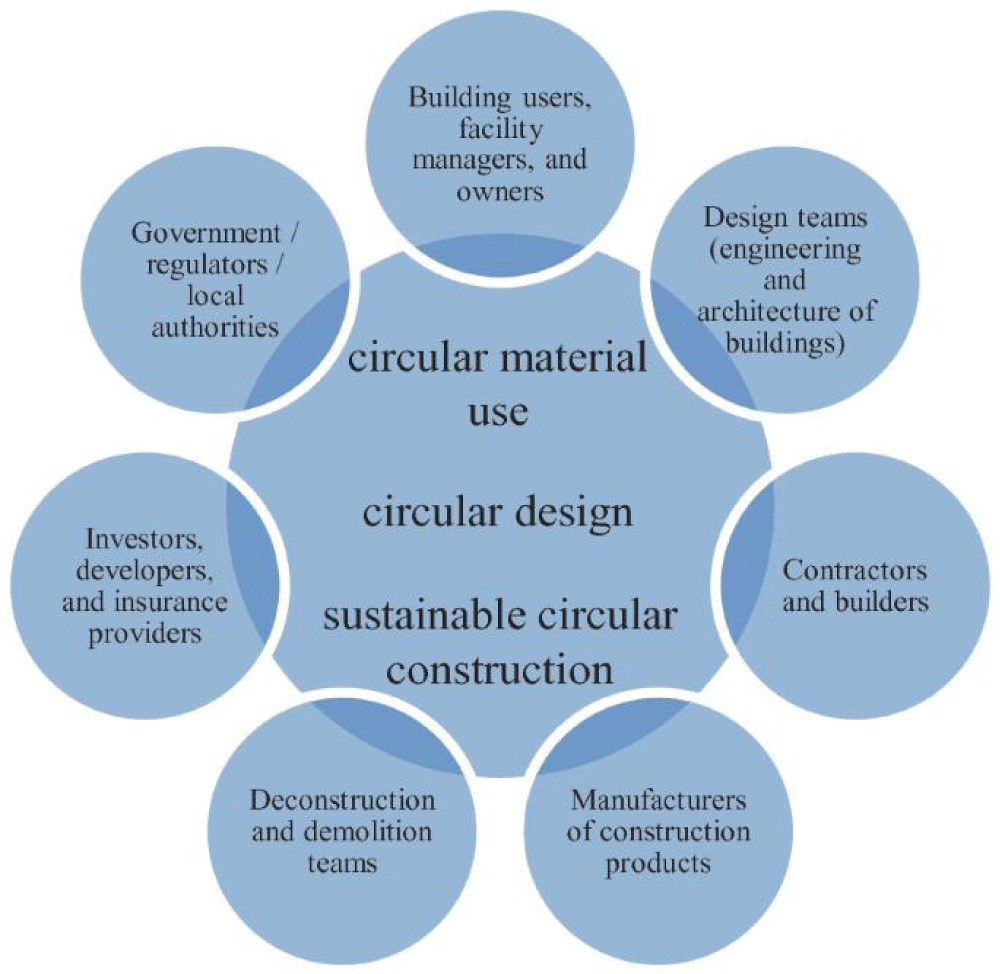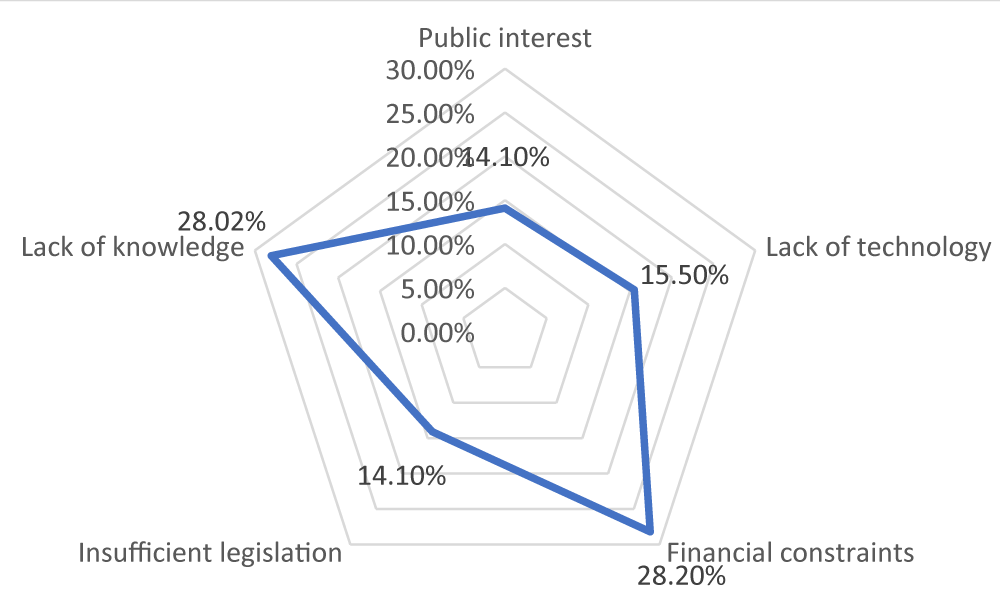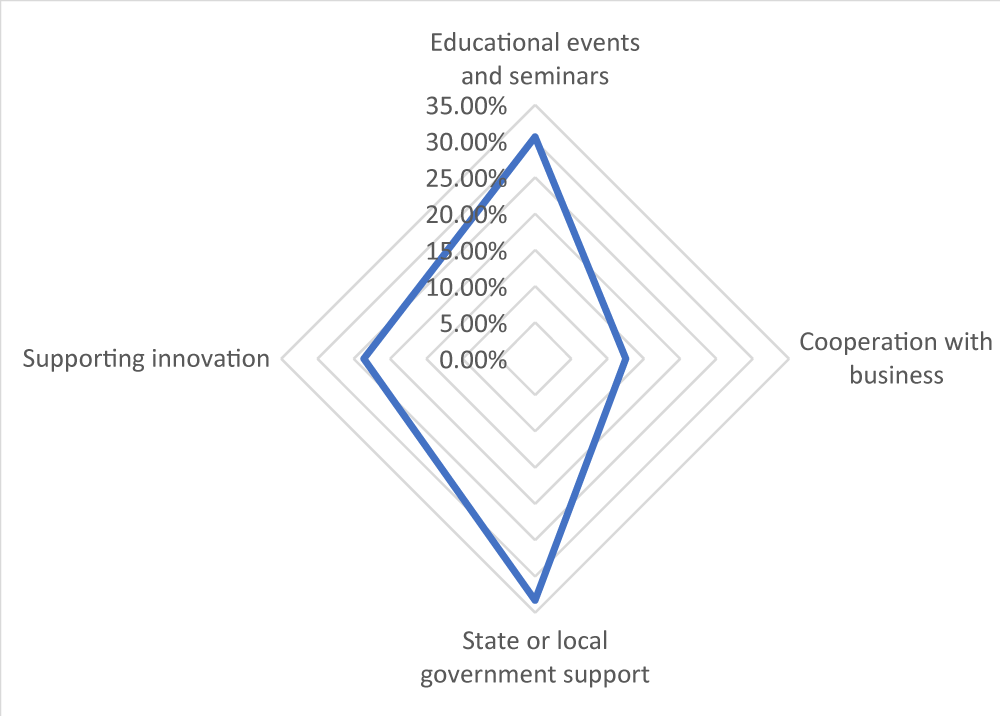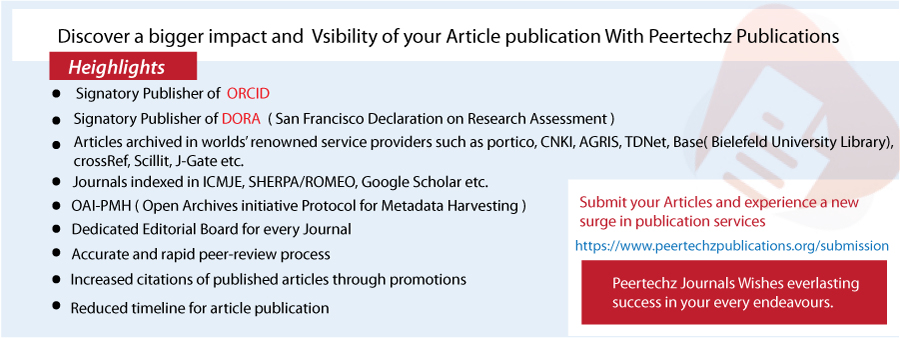Global Journal of Ecology
Implementation of Principles of Circular Construction, Case Study of Daugavpils in Latvia
Jurevica Samanta and Gusta Sandra*
Latvia University of Life Sciences and Technologies, Latvia
Cite this as
Samanta J, Sandra G. Implementation of Principles of Circular Construction, Case Study of Daugavpils in Latvia. Glob J Ecol. 2025;10(1):008-011. Available from: 10.17352/gje.000110Copyright
© 2025 Samanta J, et al. This is an open-access article distributed under the terms of the Creative Commons Attribution License, which permits unrestricted use, distribution, and reproduction in any medium, provided the original author and source are credited.The active implementation of circular construction principles is evident in legislation and discussions among industry specialists. However, the public lacks sufficient knowledge, leading to inadequate specific requirements for new buildings. Integrating circular construction principles into everyday life offers a pathway to a more environmentally sustainable and health-conscious lifestyle, fostering changes in habits, promoting care for humanity's future, and facilitating the creation of a cleaner environment while supporting the adaptation of buildings to sustainable construction principles. This research aims to identify the barriers to implementing circular construction principles in Daugavpils. Qualitative and quantitative research methods were used in this scientific study to provide a comprehensive view of the implementation of circular construction principles in Daugavpils. The survey engaged supervisors from the construction industry, as well as civil engineers and architects. The main obstacles to implementing circular construction principles in Daugavpils have been identified. Graphs illustrating the survey results have been created to showcase the primary challenges from the perspective of industry professionals and city residents. According to the survey, the primary issues with the short-term application of sustainable construction principles are related to a lack of information, knowledge, and financial support.
Introduction
Growing attention is being given to improving residents' quality of life and health. Construction waste significantly impacts public health, especially as the production of construction and building materials increases each year. Approximately one-third of the emissions produced by the construction industry come from materials extraction during production, the construction process, and renovation and demolition activities.
The topic of circular construction is especially relevant in Europe and globally in the context of sustainable development and adherence to ecological principles in the built environment. Circular construction is a strategy founded on specific principles [1]. The first step in this strategy involves extending the life cycle of buildings to preserve and maintain them for as long as possible while adapting to new needs. After considering all possible options and finding none suitable, a building can be demolished, allowing for the reuse of materials from demolished components. If reuse is unviable, the materials should be recycled. This principle also applies to new buildings, where considerations for adaptation to other needs, demolition, and recycling of demolished components should be included. The primary goal of this principle is to ensure that no waste is produced at any stage of the construction process [2,3].
The real challenge lies in convincing stakeholders (Figure 1) to adopt circular business models and a full life cycle approach that transcends the economic costs of building construction while also considering environmental factors.
The main obstacles to the implementation of circular construction principles in Daugavpils are identified. Graphs showing the results of the survey have been developed to illustrate the main challenges from the perspective of industry professionals and city residents.
Methodology
Qualitative and quantitative research methods were used in the implementation of this scientific research work to obtain a comprehensive picture of the implementation of the principles of circular construction in Daugavpils. Initially, a literature review was conducted, which analyzed the experience of other countries in implementing the principles of circular construction, as well as the construction objects and projects implemented in Daugavpils based on these principles. Relevant regulations, laws, and standards in Latvia and other countries, as well as certification systems, were also analyzed at this stage [7-13]. This provides an overview of the laws and guidelines that influence this type of construction [14-21]. In the second part of the study, a survey was carried out. The survey was carried out with supervisors from the construction industry, civil engineers, and architects, as well as 15 residents of Daugavpils Municipality, to obtain their views on the opportunities and challenges of implementing the principles of circular construction. The results of the survey were analyzed to understand the attitudes of the public and professionals towards the implementation of circular construction principles and the difficulties of their application in Daugavpils. The data from the survey was summarised to identify the main barriers and opportunities for the implementation of the principles within the city.
Results, discussion and implications
The main obstacles to implementing circular construction principles in Daugavpils have been identified. Graphs illustrating the survey results highlight the primary challenges from the perspectives of industry professionals and city residents.
The survey results show that the most commonly cited barriers are: financial constraints and lack of knowledge, each accounting for 28.2%. There is a need to improve awareness and provide access to financial resources, such as subsidies and credit programs that support companies and individuals willing to invest in sustainable projects. Lack of technology is also seen as a significant barrier (15.5%), suggesting the need to develop and improve available technologies. For example, using BIM could facilitate the planning of construction processes, allowing efficient management of materials and reducing waste. BIM would also help improve cooperation between all stakeholders involved in construction processes by a single data platform, giving access to accurate and up-to-date information [22]. Regulatory. The lack of legislation and public interest are considered less pronounced obstacles (14.1% each). However, these factors are important, as legislation and public interest encourage construction companies to follow sustainable practices and integrate circular construction principles into their projects (Figures 2,3).
Initiatives and measures for a wider application of circular construction principles are: State or Local government support (33,3%), supporting innovations (23,6%), educational events and seminars (30,6%), and cooperation with businesses (12,5%).
Only 24.4% of respondents could mention any examples of objects in Daugavpils where the principles of circular construction were implemented, among them are Daugavpils Fortress, Daugavpils Catholic Church, recycled materials (sand and similar bulk materials) for the construction of streets, tram lines, brickwork of recovered bricks, reuse of wooden parts. Only 17.1% of the examples from Europe or elsewhere in Latvia could be cited; some experts mentioned the Resource Rows project in Copenhagen, which reused bricks from buildings that could not be separated from one another for the facade of this building. Examples from Latvia included Preili Palace, which won first prize in the "Latvian Construction Award of the Year" in the "Restoration" category in 2023 and Riga Circus.
Conclusion
Based on the data gathered from the survey, the primary challenges in implementing circular construction principles are attributed to a lack of knowledge, inadequate public awareness, and insufficient financial support. To encourage broader adoption and further development of these principles, it is crucial to educate both the public and industry professionals through events and media campaigns. Additionally, financial support from state and local governments would make sustainable construction solutions more accessible. Practical positive examples play a vital role in this process.
- By reviewing the restoration works or projects on all objects in Daugavpils, one can draw convincing conclusions that reflect both the importance of preserving the buildings and their impact on the city's development. Restoration is often associated with large financial investments, in particular, the historical value of the building is restored. This is a challenge that can hinder the implementation of projects, but it also provides an opportunity to create special cultural heritage buildings that contribute to the development of cultural tourism. Restoration works often include improving the energy efficiency of the building, energy impact, and emissions, thus contributing to sustainable development and building operating costs.
- The restoration of historical buildings is a more sustainable alternative, as existing resources are used. During the restoration, improvements are made that promote accessibility for all people, for example, by installing ramps and adjusting toilets and doors. These works ensure equal opportunities for all visitors, as well as contribute to improving the quality of life.
- Restoration work plays a vital role in continuing longevity and preserving history and authenticity. The restoration process uses modern technologies and materials that restore historical elements, such as windows, doors, metal elements, and facade finishes, improving the functionality and energy efficiency of buildings.
Restoration not only preserves historical buildings but also contributes to the economic and cultural development of the city, improves the quality of life for visitors, and supports sustainable development. This proves that the preservation and adaptation of historical buildings to modern needs is an important cultural step to ensure both human and environmental sustainability.
By studying the literature and international experience, it can be concluded that Latvia, including Daugavpils, has room for improvement, citing the Nordic countries as an example of good practice. These countries have established a strong material recycling system that promotes the use of renewable resources and waste reduction. Latvia needs to further develop the material recycling system and encourage companies and building owners to carry out building certification to promote sustainable construction. At the national level, it is necessary to establish a law on household waste sorting, support, and education programs that help reduce environmental pollution and promote the use of renewable resources. For example, waste sorting, energy saving, and responsible resource consumption will contribute to a sustainable future. Each of us, with individual responsibility together with state support, can create significant changes in both the sustainable development of construction and environmental protection.
- Latvia needs to strengthen its material recycling system and encourage companies and building owners to certify buildings to promote sustainable construction.
- Most of the buildings in Daugavpils are historically significant, and their restoration helps to preserve the city’s cultural heritage while giving them new functions and life.
- Based on the survey, it can be concluded that the hypothesis has been confirmed. The main problems with the short-term application of the principles of sustainable construction are related to the lack of information, knowledge, and financial support.b
Proposals
- At the national level, it would be useful to establish a law on sorting municipal waste.
- To include in existing study programs (including construction) the use of recycled materials to promote the use of renewable resources and CO₂ reduction.
- Raise awareness among the public and professionals by organizing educational events and seminars, and using the media to promote circular construction issues.
- Provide financial support from national and local authorities to make sustainable building solutions more accessible to businesses and individuals.
- Introduce circular construction principles into public procurement by setting recovery goals in the reconstruction tender to ensure the reuse of materials and solve ecological problems.
The study was developed as part of a research project within the framework of the bachelor's study program "Civil Engineering". Thanks to Daugavpils Municipality for the provided data.
- Lean construction guidelines. Riga; 2022. 6. Available from: https://drive.google.com/file/d/164JeQ1NxZMCsdbvhjUs6mwXBsCVeNKYQ/view
- European Commission. Circular economy - principles for building design. Brussels: European Commission; 2020. Available from: https://ec.europa.eu/docsroom/documents/39984
- Héry M, Malenfer M. Development of a circular economy and evolution of working conditions and occupational risks – a strategic foresight study. Eur J Futures Res. 2020;8:8. Available from: https://eujournalfuturesresearch.springeropen.com/articles/10.1186/s40309-020-00168-7
- Metabolic. The circular design of buildings – the circular toolbox. Amsterdam; 2022. Available from: https://www.metabolic.nl/publications/the-circular-design-of-buildings/
- European Commission. Circular economy – principles for buildings design. Brussels; 2020. Available from: https://ec.europa.eu/docsroom/documents/39984
- European Commission. LEVEL(S)—taking action on the total impact of the construction sector. Brussels; 2019. Available from: https://ec.europa.eu/environment/eussd/pdf/LEVEL(S)%20CONFERENCE%20REPORT.pdf
- Bonoli A, Zanni S, Serrano-Bernardo F. Sustainability in building and construction within the framework of circular cities and European New Green Deal. The contribution of concrete recycling. Sustainability. 2021;13(4):2139. Available from: https://doi.org/10.3390/su13042139
- Soust-Verdaguer B, Moreno JAG, Llatas C. Utilization of an automatic tool for building material selection by integrating life cycle sustainability assessment in the early design stages in BIM. Sustainability. 2023;15:2274. Available from: https://doi.org/10.3390/su15032274
- Bohvalovs Ģ, Kalnbaļķīte A, Pakere I, Vanaga R, Kirsanovs V, Lauka D, et al. Driving sustainable practices in vocational education infrastructure: a case study from Latvia. Sustainability. 2023;15(14):10998. Available from: https://doi.org/10.3390/su151410998
- Schutzenhofer S, Kovacic I, Rechberger H, Mack S. Improvement of environmental sustainability and circular economy through construction waste management for material reuse. Sustainability. 2022;14(17):11087. Available from: https://doi.org/10.3390/su141711087
- European Commission. Circular economy – principles for building design. Brussels; 2020. Available from: https://ec.europa.eu/docsroom/documents/39984
- Government Offices of Sweden. National strategy for a circular economy. Stockholm; 2020. p. 22–23. Available from: https://faolex.fao.org/docs/pdf/swe208661.pdf
- Nordic Sustainable Construction. Collaboration program for sustainable construction. Copenhagen; 2018. Available from: https://www.nordicsustainableconstruction.com/about
- European Commission. Buildings and construction. Available from: https://single-market-economy.ec.europa.eu/industry/sustainability/buildings-and-construction_en
- European Commission. LIFE Waste to Resources IP LIFE 3.0—LIFE project public page. Available from: https://webgate.ec.europa.eu/life/publicWebsite/project/details/5808
- European Commission. Digital education action plan (2021–2027). European Education Area. Available from: https://education.ec.europa.eu/node/1518
- European Commission. H&M Group’s vision is to become 100% circular. Available from: https://circulareconomy.europa.eu/platform/en/commitments/hm-groups-vision-become-100-circular
- European Commission. Questions and answers—new EU forest strategy for 2030. Available from: https://ec.europa.eu/commission/presscorner/detail/en/QANDA_21_3548
- European Commission. New European Bauhaus: beautiful, sustainable, together. Available from: https://new-european-bauhaus.europa.eu/index_en
- European Parliament. Strategy for a sustainable built environment. Legislative Train Schedule. Available from: https://www.europarl.europa.eu/legislative-train/theme-a-european-green-deal/file-strategy-for-a-sustainable-built-environment
- Mavlutova I, Atstāja D, Gusta S, Hermanis J. Management of household-generated construction and demolition waste: circularity principles and the attitude of Latvian residents. Energies. 2023;17:205. Available from: http://dx.doi.org/10.3390/en17010205
- Bragança L, Cvetkovska M, Askar R, Ungureanu V, editors. Creating a roadmap towards circularity in the built environment. Cham: Springer Nature Switzerland; 2024. Available from: https://library.oapen.org/handle/20.500.12657/86133
Article Alerts
Subscribe to our articles alerts and stay tuned.
 This work is licensed under a Creative Commons Attribution 4.0 International License.
This work is licensed under a Creative Commons Attribution 4.0 International License.





 Save to Mendeley
Save to Mendeley
